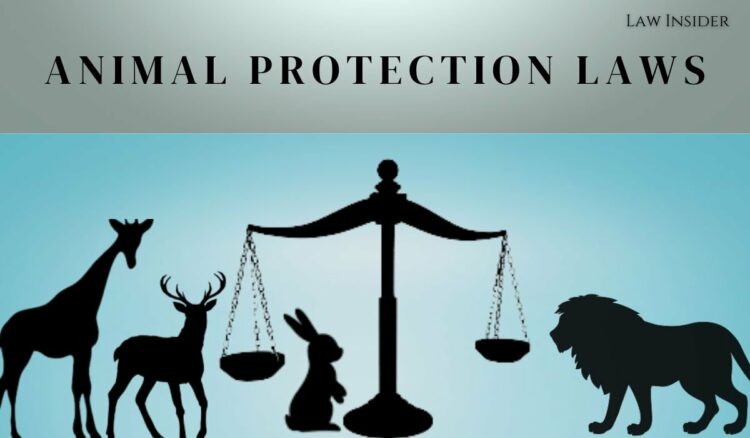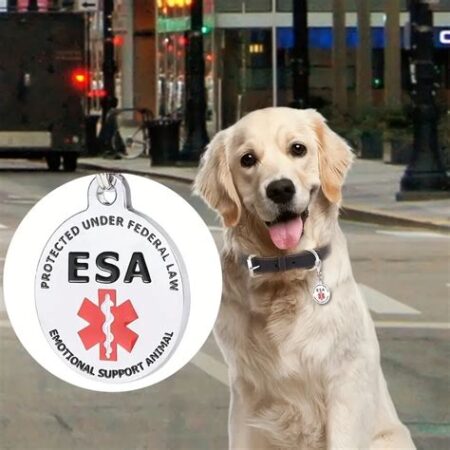
- Animal Welfare Laws
- Laws That Protect Animals
- Types of Animal Welfare Laws
- 1. Criminal Laws:
- 2. Civil Laws:
- 3. Administrative Laws:
- Animal Welfare Laws: A Shield for Our Furry Friends
- Importance of Animal Welfare Laws
- Enforcement and Penalties
- Specific Laws Protecting Animals
- Conclusion
- National Laws Protecting Animals
- Challenges in Enforcing Animal Welfare Laws
- Types of Animal Protection Laws
- Enforcement of Animal Welfare Laws
- Landmark Animal Protection Cases
- Emerging Trends in Animal Welfare Law
- Future of Animal Welfare Laws
**The Laws that Protect Our Furry Friends**
In the realm of animal rights, laws serve as the backbone of protection for our furry companions. From the depths of history to the modern era, legislation has evolved to safeguard animals from cruelty, neglect, and exploitation.
Animal Welfare Laws
Humane societies and animal welfare organizations have long championed the cause of animals, advocating for their well-being. The Animal Welfare Act of 1966 marked a pivotal moment in the United States, establishing federal standards for the treatment of animals used in research, exhibition, and transport. This groundbreaking law set the stage for subsequent legislation, both at the state and national levels.
The Animal Welfare Act (AWA) defines humane care as encompassing adequate housing, ventilation, sanitation, nutrition, water, exercise, and veterinary care. Failure to meet these standards can result in penalties, including fines and imprisonment. The AWA is particularly concerned with the welfare of animals in commercial settings, such as research laboratories, pet stores, and circuses.
Furthermore, the AWA empowers the United States Department of Agriculture (USDA) to enforce its provisions. The USDA conducts regular inspections of facilities that use animals and investigates allegations of cruelty. Animals discovered in distress may be removed and placed in protective custody. Law enforcement agencies also play a crucial role in enforcing the AWA, responding to reports of animal abuse and neglect.
In addition to the federal AWA, numerous states have enacted their own animal welfare laws. These laws often expand upon the protections provided by the federal law, addressing specific issues such as animal cruelty, abandonment, and pet overpopulation. By establishing clear standards of care and providing mechanisms for enforcement, animal welfare laws help to ensure the humane treatment of animals throughout the country.
Laws That Protect Animals
Animals, our cherished companions and fellow beings, deserve our utmost respect and compassion. Recognizing their intrinsic value, countries worldwide have enacted a robust legal framework to safeguard their well-being. These laws serve as a beacon of hope, empowering us to champion their rights and ensure they live free from suffering and cruelty.
Types of Animal Welfare Laws
The spectrum of animal welfare laws encompasses three distinct categories:
1. Criminal Laws:
These laws impose criminal penalties on individuals who engage in egregious acts of animal abuse, neglect, or endangerment. They criminalize actions such as intentional harm, abandonment, and failure to provide adequate care. Penalties can range from fines to imprisonment, serving as a strong deterrent against animal cruelty.
2. Civil Laws:
Civil laws provide a mechanism for victims of animal abuse to seek compensation and redress. They empower individuals to file lawsuits against perpetrators, seeking damages for veterinary expenses, emotional distress, and other losses. By providing a legal avenue for accountability, civil laws encourage responsible pet ownership and discourage negligent or malicious behavior toward animals. If you’ve witnessed or experienced animal abuse, don’t hesitate to exercise your rights under civil law to protect these innocent creatures.
Animal welfare organizations, dedicated to safeguarding animal rights, often play a pivotal role in enforcing civil laws. They may provide legal assistance, advocate for victims, and educate the public about the importance of animal protection. Through their tireless efforts, these organizations make a profound impact on the lives of countless animals, ensuring their well-being and dignity.
Additionally, civil laws empower authorities to seize animals from owners who have committed acts of cruelty or neglect, ensuring their safety and preventing further harm. The courts may also impose restrictions on ownership, prohibiting individuals with a history of animal abuse from acquiring or possessing animals in the future. These measures provide a vital layer of protection for animals by limiting their exposure to potential abusers.
In the case of animal neglect, civil laws provide a framework for authorities to intervene and remove animals from unsafe or unsanitary conditions. This ensures that neglected animals receive proper care and attention, restoring their health and well-being. Neglect can manifest in various forms, such as malnutrition, dehydration, lack of veterinary care, and inadequate shelter. By empowering authorities to address neglect, civil laws prevent animals from enduring prolonged suffering and distress.
3. Administrative Laws:
Administrative laws empower government agencies to regulate animal care and welfare standards. They set forth specific regulations on issues such as animal housing, transportation, and veterinary practices. These laws aim to ensure that animals are treated humanely throughout their lives, from birth to death. Failure to comply with administrative laws can result in fines, license suspensions, or even criminal charges.
**Laws That Protect Animals: Ensuring the Well-being of Our Animal Companions**
Protecting the lives and well-being of our furry friends is of utmost importance, and various laws have been enacted to safeguard their rights. These laws serve as a beacon of hope for animals, providing them with a voice against cruelty, neglect, and abuse.
**Enforcement of Animal Welfare Laws**
Animal welfare laws are not merely words on paper; they have teeth. Their enforcement is primarily entrusted to three entities: animal control officers, law enforcement agencies, and specialized animal protection organizations. These dedicated individuals work tirelessly to ensure that animals are treated with the respect and compassion they deserve.
**Animal Control Officers:** Local animal control officers are often the first responders to reports of animal cruelty and neglect. Armed with extensive knowledge of animal welfare regulations, they investigate complaints, issue citations, and, if necessary, seize animals from dangerous situations. Their swift and professional action provides immediate relief to suffering animals.
**Law Enforcement Agencies:** Police officers and sheriffs play a vital role in enforcing animal welfare laws. They investigate serious cases of animal abuse, neglect, or abandonment. Their training and authority enable them to gather evidence, arrest perpetrators, and ensure that animals receive the justice they are entitled to.
**Specialized Animal Protection Organizations:** Various non-profit organizations have dedicated themselves solely to protecting animals. Humane societies, animal shelters, and animal rights groups often initiate complaints, assist in investigations, and provide expert advice to law enforcement and animal control officers. Their tireless efforts complement the work of government agencies, ensuring that no animal slips through the cracks.
Together, these entities form a formidable force against animal cruelty. Their unwavering commitment ensures that animals have a fighting chance against those who would harm them.
Animal Welfare Laws: A Shield for Our Furry Friends
In a society that prides itself on compassion, the protection of animals should be paramount. Animal welfare laws act as a vital safeguard, shielding our furry companions from cruelty and promoting their well-being. These laws recognize the inherent value of animals and establish a framework for their humane treatment.
Importance of Animal Welfare Laws
Animal welfare laws hold immense significance in safeguarding the lives of animals. They lay down clear guidelines for responsible animal ownership, preventing neglect, abandonment, and abuse. By enforcing these laws, we create a society where animals are treated with respect and their basic rights are protected.
Enforcement and Penalties
Animal welfare laws are only effective if they are enforced diligently. Authorities have a crucial role to play in ensuring compliance and holding violators accountable. Penalties for animal cruelty can vary, ranging from fines to imprisonment, depending on the severity of the offense.
Specific Laws Protecting Animals
Numerous laws have been enacted to protect animals from various forms of mistreatment. These laws cover a broad spectrum of issues, including:
- Animal Cruelty Laws: These laws prohibit intentional acts of harm or neglect against animals, such as beating, starvation, or abandonment.
- Pet Protection Laws: These laws regulate the sale, breeding, and transportation of companion animals, ensuring their health and safety.
- Agricultural Animal Welfare Laws: These laws address the well-being of farm animals, including standards for housing, nutrition, and veterinary care.
- Animal Research Laws: These laws regulate the use of animals in scientific research, ensuring their humane treatment and minimizing pain and distress.
li>Wildlife Protection Laws: These laws protect wild animals from hunting, poaching, and habitat destruction.
Conclusion
Animal welfare laws are an indispensable part of a compassionate society. By establishing clear boundaries for animal treatment, these laws safeguard our furry friends and foster a culture of respect and empathy. Their enforcement is crucial for ensuring that animals are protected from harm and live dignified lives. As we continue to evolve as a society, it is imperative that we strengthen and uphold these laws to create a world where animals are valued and cherished.
National Laws Protecting Animals
In an age where animal cruelty is rampant, it’s imperative to shed light on the laws designed to protect our furry friends. From the landmark Animal Welfare Act to state-level initiatives, these regulations play a crucial role in safeguarding the well-being of our non-human companions.
Challenges in Enforcing Animal Welfare Laws
Despite the noble intentions behind animal protection laws, enforcing them can be an uphill battle. Several obstacles stand in the way of ensuring justice for animals.
Lack of Resources
Enforcing animal welfare laws requires a dedicated team of investigators, prosecutors, and veterinarians. However, budget constraints and staffing shortages often hinder their ability to respond promptly to reports of animal abuse and neglect.
Public Awareness
Many animal cruelty cases go unreported because people are unaware of the laws or don’t know how to report them. Raising public awareness about the importance of animal welfare and encouraging citizens to speak up for animals can significantly increase the likelihood of successful prosecutions.
Resistance from Individuals
Some individuals believe that animals are not deserving of legal protection. They may view animals as mere property, not deserving of the same consideration as humans. This resistance can make it difficult for law enforcement to secure convictions in animal cruelty cases.
Lack of Veterinary Evidence
In many cases, animal cruelty is difficult to prove without veterinary evidence. However, access to veterinary resources can be limited, especially in rural areas. This can make it challenging to gather the necessary evidence to support criminal charges.
Cultural Differences
Cultural differences can also influence the enforcement of animal welfare laws. In some cultures, animals are traditionally treated as a commodity, leading to a lack of understanding of their rights. This can make it difficult to achieve consensus on animal protection laws that align with societal values.
Laws That Protect Animals: A Comprehensive Overview
In recognition of the intrinsic value and well-being of animals, various laws have been enacted to safeguard their rights and prevent their exploitation. These legal frameworks serve as a vital foundation for promoting animal welfare and fostering a compassionate society towards all creatures. From landmark legislation to emerging trends, this article delves into the intricate world of animal protection laws and their impact on the lives of our furry friends.
Types of Animal Protection Laws
Animal protection laws encompass a broad spectrum of legal provisions designed to prevent cruelty, neglect, and exploitation. Some prominent categories include:
- Anti-cruelty laws prohibit intentional or reckless harm to animals.
- Neglect laws address the failure to provide adequate care, food, water, and shelter.
- Animal abuse laws criminalize acts of intentional and malicious harm or killing.
- Issuing citations and fines
- Seizing animals from neglectful or abusive situations
- Prosecuting individuals who violate animal welfare laws
- Expanding the definition of “animal” to include invertebrates and fish
- Enhancing protection for animals used in research and entertainment
- Promoting responsible pet ownership and spaying/neutering initiatives
- Increased focus on animal sentience and emotional well-being
- Stricter penalties for animal abuse and neglect
- Greater recognition of the role of animals in human society
li>
Enforcement of Animal Welfare Laws
The effectiveness of animal protection laws relies heavily on their enforcement by law enforcement agencies. In many jurisdictions, animal control officers are responsible for investigating complaints, gathering evidence, and enforcing the law. While enforcement strategies vary, several common approaches include:
Landmark Animal Protection Cases
Several landmark cases have shaped the landscape of animal welfare law. One notable example is the Animal Legal Defense Fund (ALDF) v. Espy case, which recognized animals as having legal standing to sue for their own protection. This ruling paved the way for animals to be considered legal entities with certain rights.
Emerging Trends in Animal Welfare Law
Animal welfare legislation is constantly evolving to keep pace with changing societal attitudes and scientific advancements. Some emerging trends include:
Future of Animal Welfare Laws
As society’s understanding of animal welfare continues to deepen, animal protection laws are expected to evolve accordingly. Anticipated future developments include:




